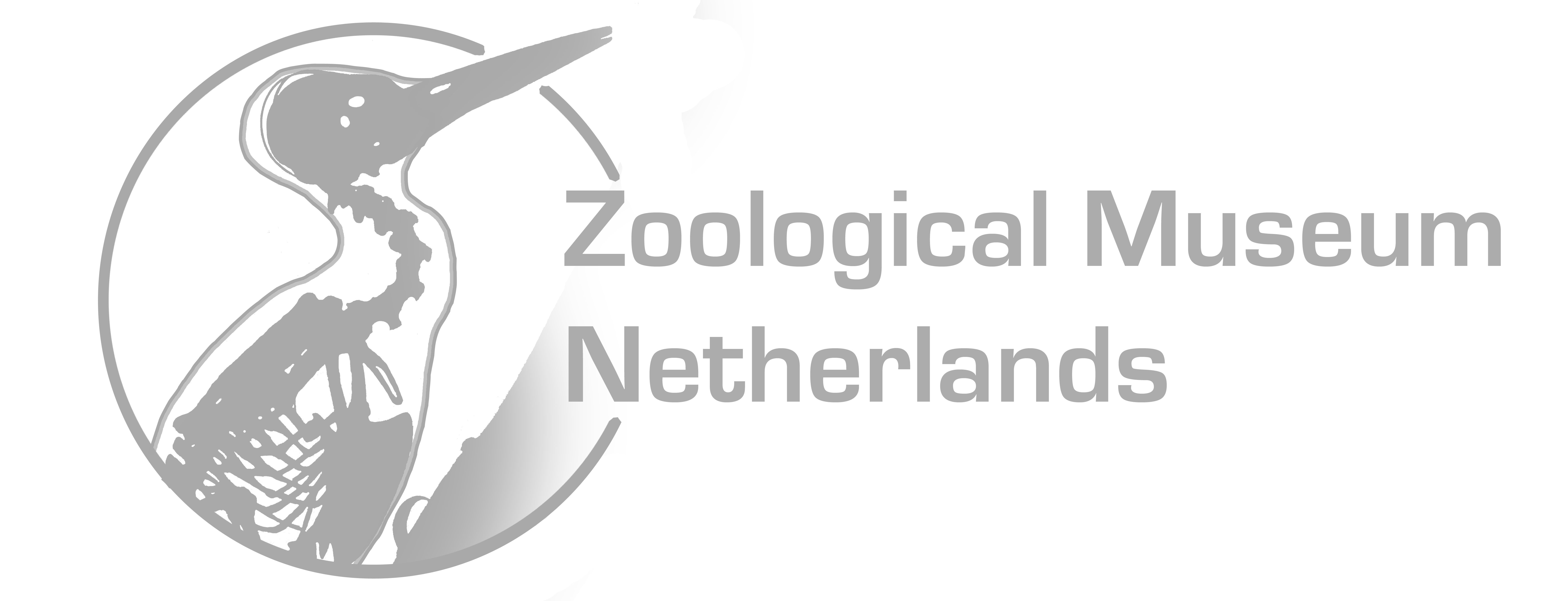How to explore the forest from top to bottom at high speed?
Acrobats of the forest
Red squirrels make the best of the forest: they can handle a wide variety of food types, which they can collect from almost anywhere in the forest: from buried seeds in the forest floor to bird eggs in a high tree nest.
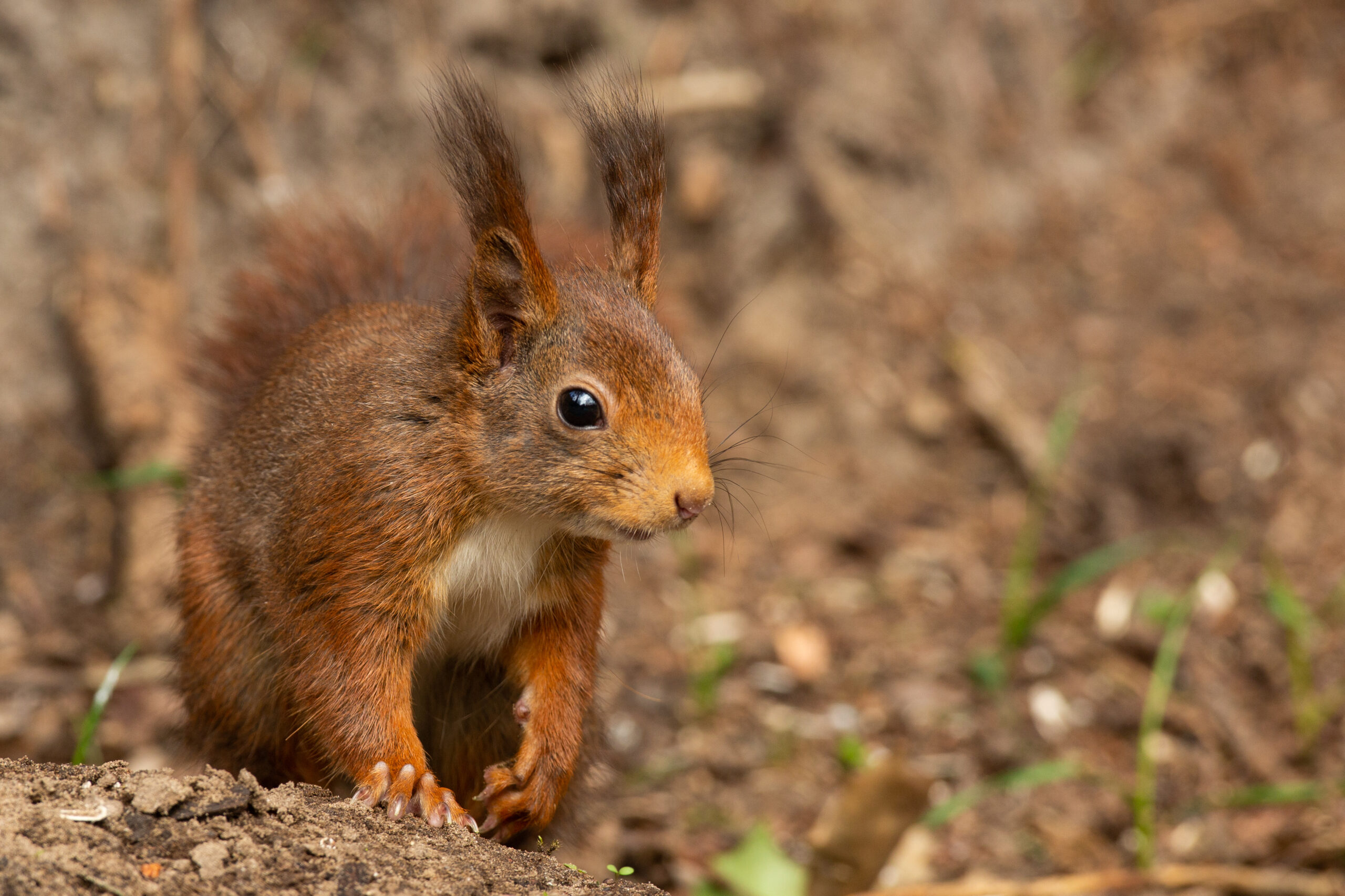
The apparent ease with which they move across tree trunks and even the thinnest branches to reach their food sources is astonishing. Thus, clearly, adaptations to manoeuvre through the trees dominate the squirrel’s body.
Climbing pads
To get around squirrel-style, squirrels have long limbs with extremely long toes, which helps them grasping branches and twigs when jumping and running from one tree to another. The thumbs of the front feet, however, lost their finger-like shape and are reduced to solid pads that can be found all over the feet of the front legs. The pads point towards the toes and assist in grasping small twigs, but also serve to create drag when the squirrel moves down a tree head-down.
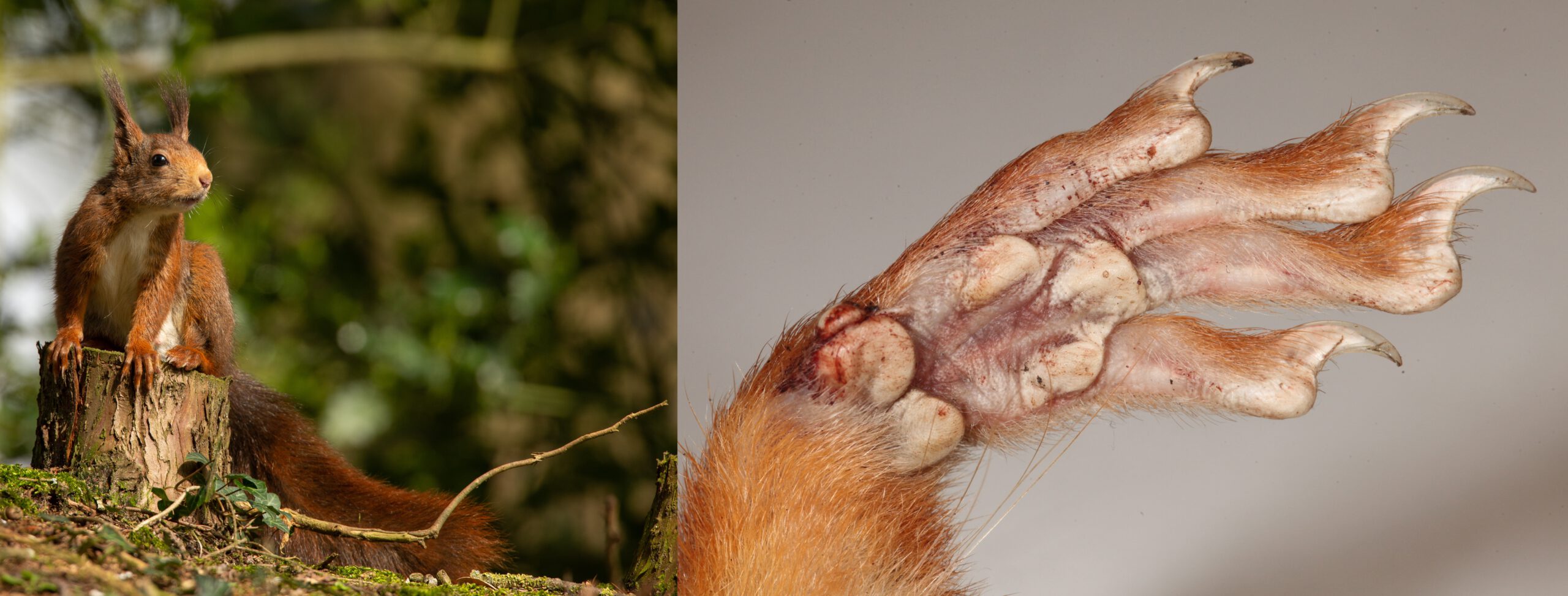
The foot pads on the hind legs, however, are comparable to those of non-climbing mammals and are covered in hair. Although the body masses of an average black woodpecker (another expert climber) and red squirrel are very comparable, squirrel’s nails are much smaller, less curved and less sharp.
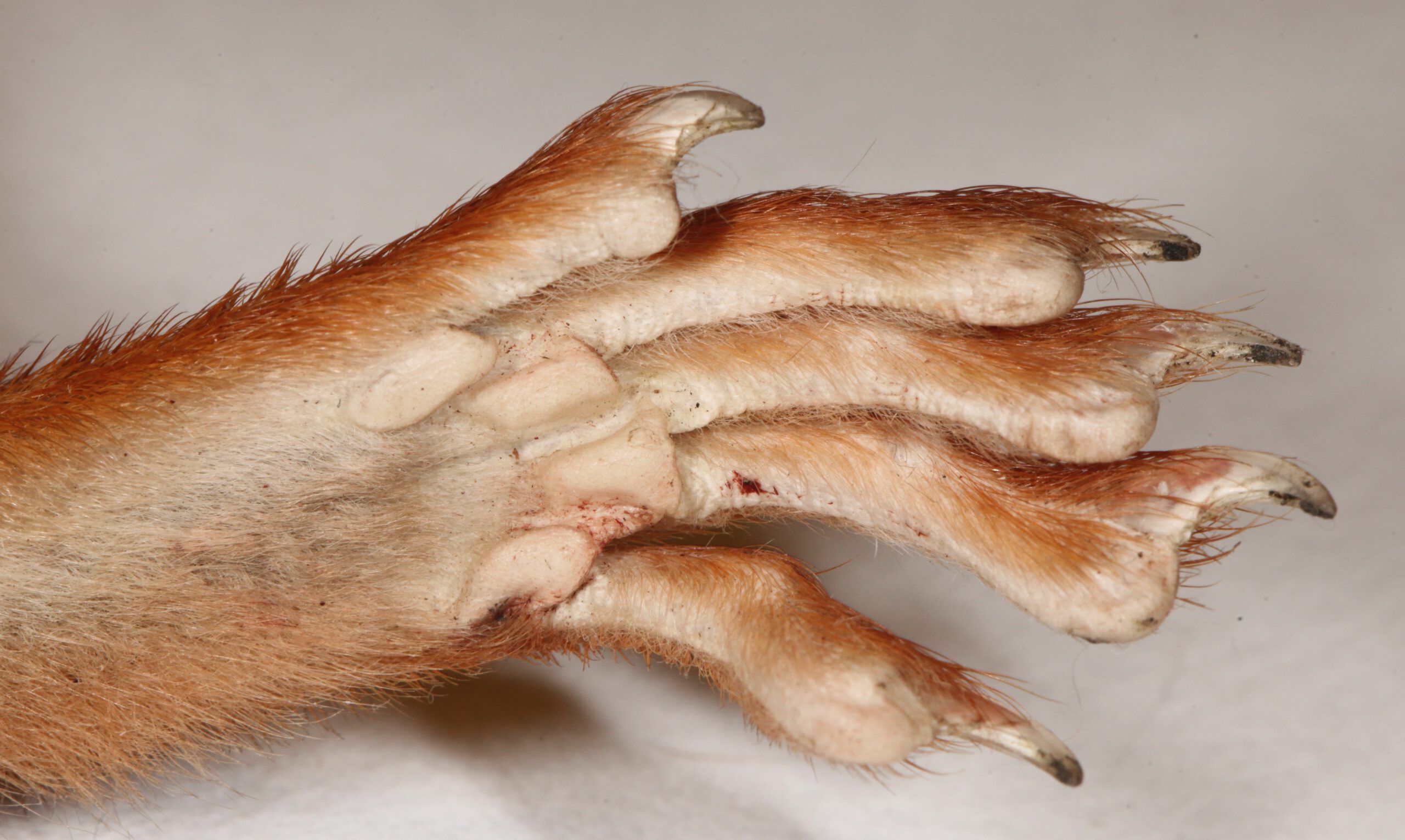
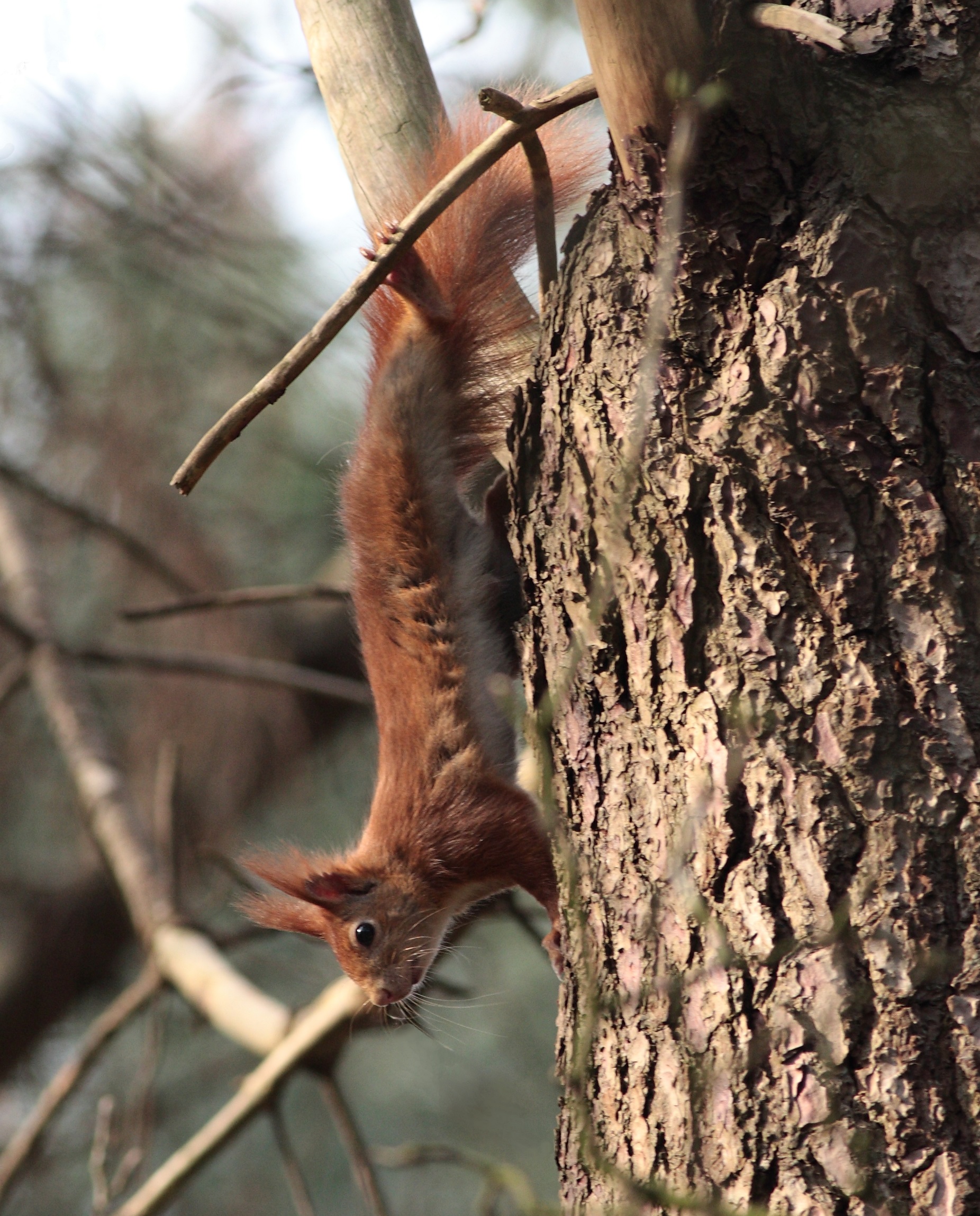
This could be related to the fact that squirrels have four limbs to create grip, two of which have specially adapted padding, which woodpeckers do not have. On top of that, a woodpecker might need much stronger nails to hold extra tight while drumming and hammering, actions which are unfamiliar to the squirrel.
Continue reading
Power & flexibility
Obviously, the hind legs main role is to provide the power to jump. The front legs are most important to assist a safe landing, and climbing. Accordingly, the front leg muscles are very strong relative to those of the hind limbs. However, the toes of the hind limbs can provide enough support for squirrels to hang upside down, for example to collect nuts from the ends of thin twigs. In order to do so, the hind limbs show exceptional flexibility, and can be twisted completely outward and even backward, in parallel to the tail.

The tail itself is used to maintain balance in jumping and landing. The long tail hairs function in social communication and perhaps to curl around the body to stay warm when in rest, as red squirrels do not hibernate and young may even be born during winter.
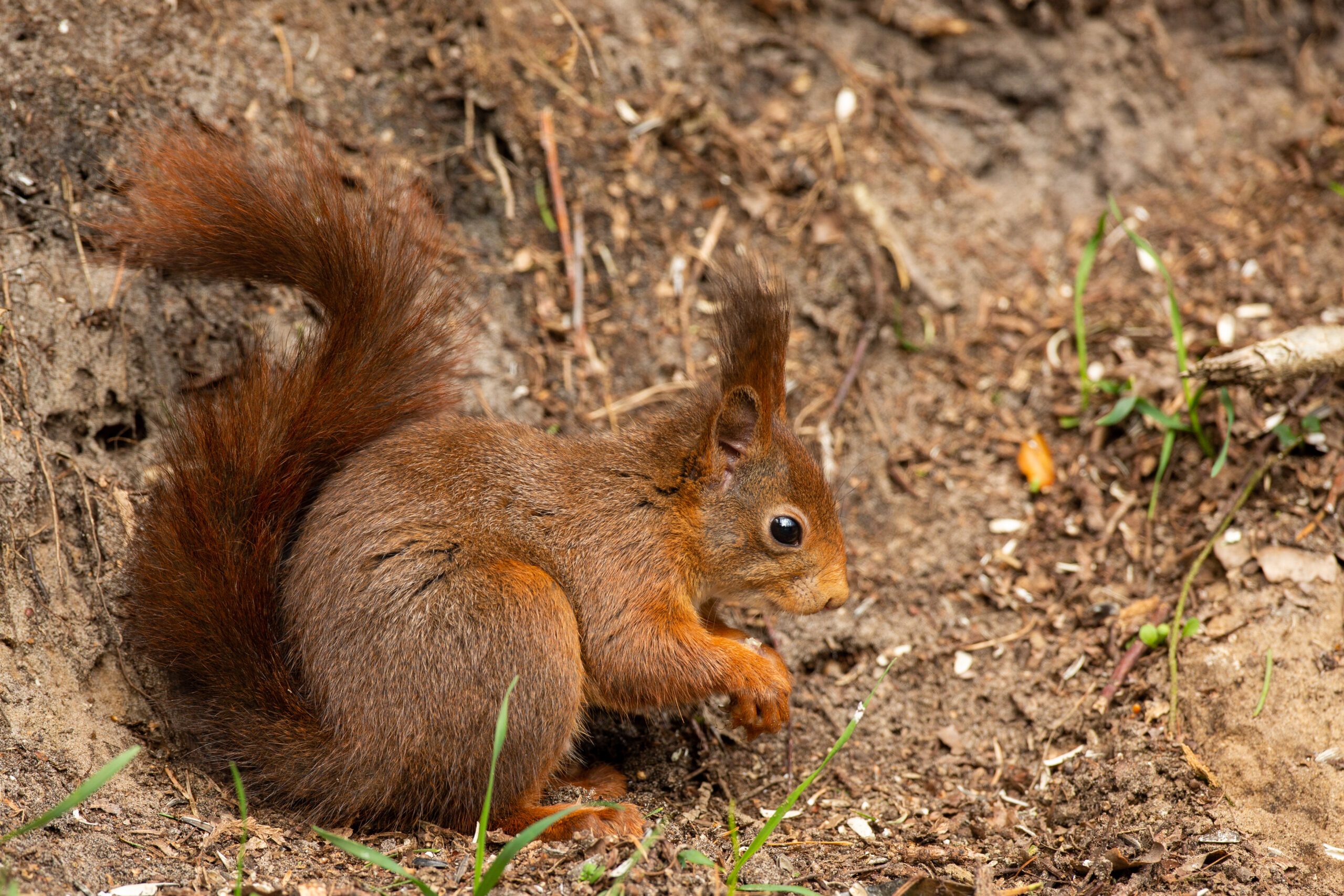
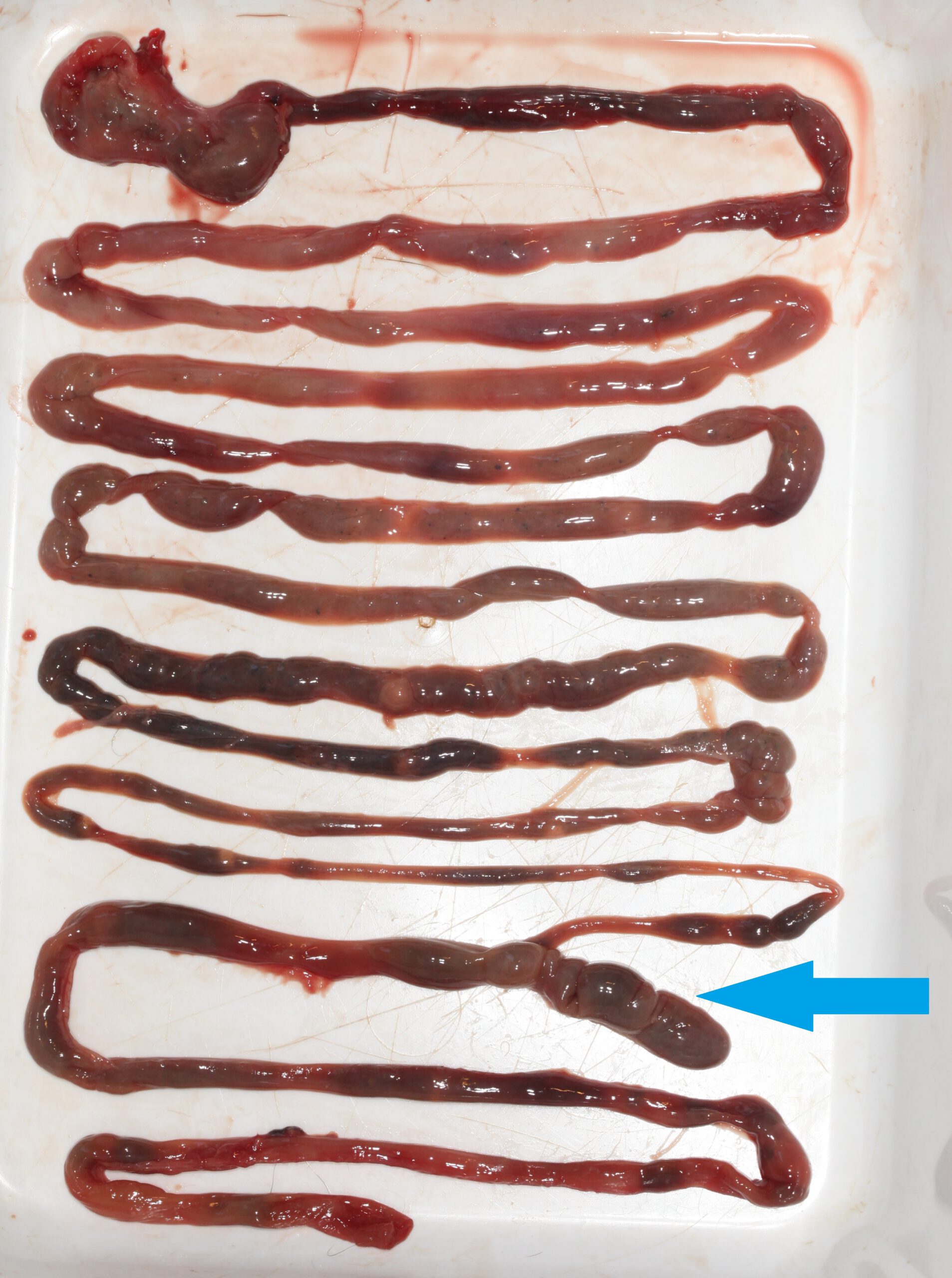
Squirrels feed from cached vegetable food items during winter, which are typically seeds and nuts, but also mushrooms. The stomach is large and muscular and the intestine is long, all adapted to maximise nutrient intake from hard-to-digest food material. A relatively large blind gut is present, which also helps optimising the efficiency of the digestion.

